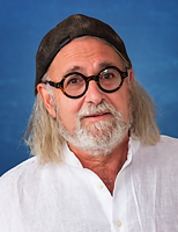In general, Jews expect to maintain a becoming agnosticism about metaphysics. They tend to observe the admonition of the second chapter of the Mishnah in Hagigah, namely that “whoever considers these four things, better that they should never have come into the World: what is above, what is below, what came before and what will be after.” Hence, it is considered slightly tasteless to speculate about Heaven, or the afterlife, or even the nature of the soul, in conventional Judaism.
The High Holy Day liturgy is an exception to this rule. If we are to take such prayers as U’Netana Tokef at face value, there is a Heavenly Court, with two ledger books, the Book of Life and another book too terrible to mention. The souls file through the courtroom to receive their judgment. Perhaps, as portrayed by Yehudah Leib Peretz in his classic tale “The Three Gifts,” sins and mitzvot are weighed on a scale, with the preponderance of one or the other indicating whether that person would live out the year. “Who by fire and who by water” is the question intoned in the prayer and, for the simple believer, the focus of properly directed anxiety.
I used to think that the U’netanah Tokef prayer was written, as the tradition informs us, during a particular watershed period in the development of Judaism, in the 12th-13th century Rhineland, in the era of Rashi, his interpreters the Tosafot and the mysterious pietists of the era called the German Hasidim. This was a flowering of Judaism that occurred amidst the horror and tragedy of the first Crusade. The prayer’s doomy predestination seemed to fit the grim medieval fatalism of that era.
However, I recently read an article by the great Rabbi David Golinken which averred that the prayer had been found in fragments in the Cairo Genizah. That would make the prayer far earlier, with a Middle Eastern provenance. I was pleased to hear this, because, after all, the earlier the source, the more accurate it is. Hence, Rabbi Goliken reinforced my emunah, my faith, yet again.
Throughout the Teshuvah cycle, the individual and community are compared to helpless serfs in an autocratic monarchy, pleading for mercy and a gracious judgment by a capricious, inattentive monarch, pessimistic in the knowledge of their own inadequacy. “You gave me the sacred means to reproduce,” goes the “Prayer of Worthiness” recited traditionally on the eve of Yom Kippur, “and I squandered and defiled it.” I have seen old men piously reciting these lines. “In the heavenly academy and the earthly one, I beseech permission to pray with the sinners,” goes the preamble to Kol Nidre. The liturgy treats the Jews as if they are blameless and utterly corrupt at the same time and, anyway, their fate is random, and up to God.
Across the spectrum of Jewish observance, this will be the most concentrated time that any Jew will spend in the synagogue. The synagogue movement preceded the Rabbis of the Talmud, and although these Rabbis gave us the Judaism that we practice, they did not initiate the synagogue rite. It came before them, in the two hundred or so lost years between the construction of the 2nd Temple by Ezra and Nehemiah and the coming of Alexander the Great in 336 B.C.E. The Rabbis of the Talmud would like us to think that they controlled the synagogue movement, just as they would like us to think that they had authority over the Temple in Jerusalem, but neither of these premises is true. Synagogues were set up as replacements for the Jerusalem Temple, and, as the latter was considered a portal to Heaven, every synagogue was similarly a portal. So it is that on the High Holy Days, our experience of Judaism vaults past the sometimes petty concerns of the Rabbinic mentality into the pure, ecstatic service of the old Temple and the synagogues that came to replace it in the mysterious early days of the return to Zion. Hence, the ingathering of worshippers, of “people we only see once a year,” should not be considered a corruption or distortion of our aims in synagogue life. This is the time of ingathering, for the community to look around and see who is still here, to welcome back the disaffected and so commence, the seasons of our greatest ascent.
Shanah Tovah!


 Download PDF
Download PDF